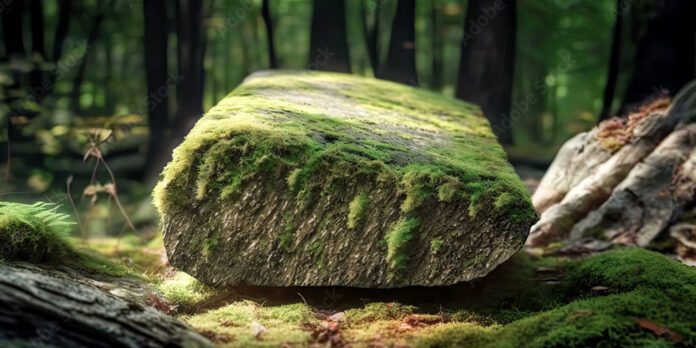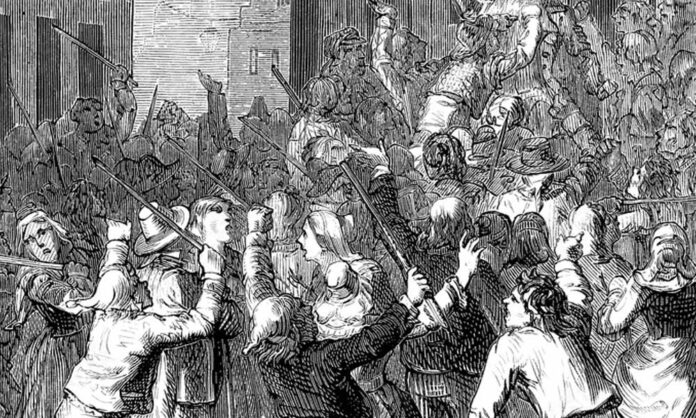Sir Henry Burke’s seat of Marblehill, as seen in the distance from the road
Date 1888
From that day to this no one has been brought to justice for this crime, committed in broad daylight, and within sight of the highway. Mr. Place, whom I saw at Portumna, told me that he believed the police had no moral doubt as to the murderer of Finlay, but that it was useless to think of getting legal evidence to convict him.
Mr. Tener tells me that when Mr. Wilfrid Blunt came to Woodford he went with Father Egan, and accompanied by the police, to see the widow of this murdered man, heard from her own lips the sickening story, and took notes of it. But when Mr. Rowlands, M.P., an English “friend of Home Rule,” was examined the other day during the trial of Mr. Blunt, he was obliged to confess that though he had visited Woodford more than once, and conversed freely with Mr. Blunt about it, he had “never heard of the murder of Finlay.”
Such an incident is apparently of little interest to politicians at Westminster. Fortunately for Ireland, it is of a nature to command more attention at the Vatican.
Nature has sketched the scenery of this part of Ireland with a free, bold hand. It is not so grand or so wild as the scenery of Western Donegal, but it has both a wildness and a grandeur of its own. Sir Henry Burke’s seat of Marblehill, as seen in the distance from the road, stands superbly, high up on a lofty range of wooded hills, from which it commands the country for miles. And no town I have seen in Ireland is more picturesquely placed than Loughrea. It has an almost Italian aspect as you approach it from Woodford. But no lake in Lombardy or Piedmont is so peculiarly and exquisitely tinted as the lough on which it stands. The delicate grey-green of the sparkling waters reminded me of the singular and well-defined belts and stretches of chrysoprase upon which you sometimes come in sailing through the dark azure of the Southern Seas. I have never before seen precisely such a hue in any body of fresh water. The lake is incorrectly described, Mr. Tener tells me, in the guide-books, as being one of the many curious developments of the Lower Shannon. It is fed by springs, but if, like the river-lakes, it was formed by a solution of the limestone, this fact may have some chemical relation with its very peculiar colour. It contains three picturesque islands. No stream flows into it, but two streams issue from it. The town of Loughrea is an ancient holding of the De Burghs, and the estate-office of Lord Clanricarde is here in one wing of a great barrack, standing, as I understood Mr. Tener to say, on the site of a former fortress of the family. Lord Clanricarde’s property here is put down by Mr. Hussey de Burgh at 49,025 acres in County Galway, valued at L19,634, and at 3576 acres in the county of the City of Galway, valued at L1202. These, I believe, are statute acres, and in estimating the relation of Irish rentals to Irish land this fact must be always ascertained. Of the so-called “Woodford” property the present rental is no more than L1900, payable by 260 tenants. The Poor-Law valuation for taxes is L2400. There was a revision of the whole Galway property made by the father of the present Marquis. Of the 260 Woodford holdings only twelve were increased, in no case more than 6-1/4 per cent, over the valuation. In 1882 six of these twelve tenants applied to the Land Court. The rents were in no case restored to the figures before 1872, but about 7 per cent. was taken off the increased rental. The assertion repeatedly made that in 1882 rents were reduced by the Land Court 50 per cent. on the Clanricarde estates, Mr. Tener tells me, is absolutely false. In the first year of the Court no reduction went beyond 10 per cent., and in later years, even under the panic of low prices, the average has not exceeded 20 per cent.
Original source: Book, Ireland Under Coercion (2nd ed.) (2 of 2) (1888) Page 54.
“The town of Loughrea is an ancient holding of the De Burghs”




